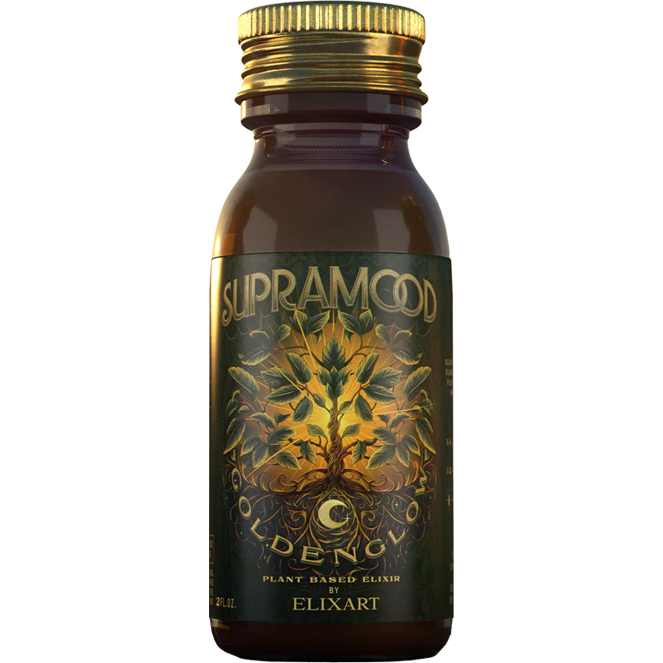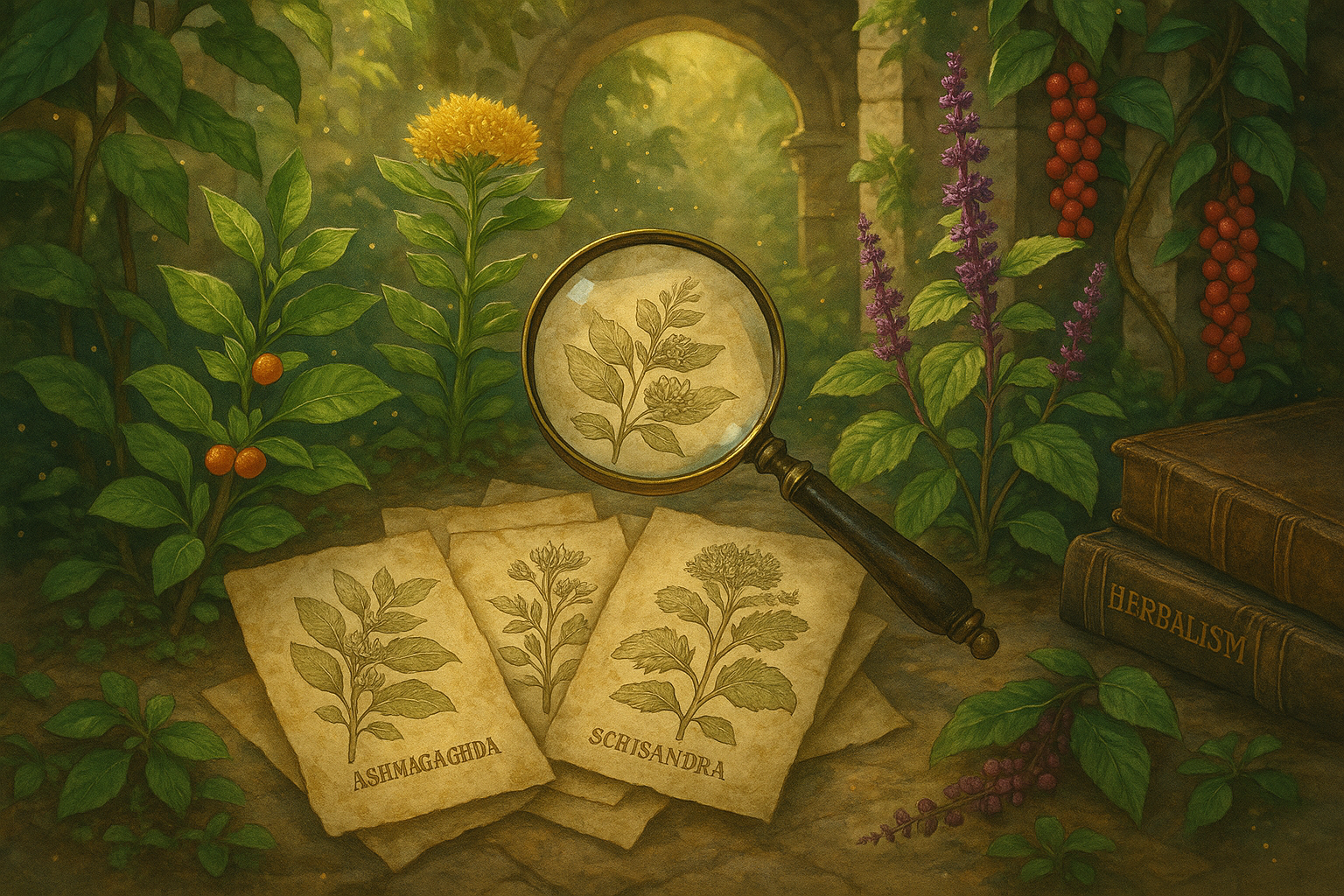Herbal Wisdom from Around the World is a treasure trove of ancient knowledge and remedies that have nourished diverse cultures for centuries. In this article, we will explore these time-honored practices and discover the deep link between nature and human well-being.
But why should we care about traditional herbal knowledge? Isn't it just something from the past? Actually, it's far more relevant than we might think. By uncovering these age-old remedies, we can learn valuable lessons that complement modern medicine and offer comprehensive solutions for today's health issues.
In this article, we will:
- Explore how indigenous communities have preserved their ecological wisdom through generations
- Understand the role of organizations in safeguarding traditional herbal knowledge
- Discover how oral traditions and storytelling have been used to pass down this wisdom
- Gain insights into different traditional herbal systems from around the world
- Discuss ways to bridge the gap between ancient wisdom and scientific advancements
- Look at how herbal remedies can be used to address modern health challenges
This article aims to go beyond academic study; it's a quest to blend the wisdom of our ancestors with the progress of contemporary medicine. By doing so, we hope to enhance our understanding and approach to health, creating a harmonious balance between heritage and innovation.
1. Indigenous Traditional Ecological Knowledge (ITEK) and Its Connection to Herbal Wisdom
Indigenous Traditional Ecological Knowledge (ITEK) is the deep, location-specific understanding of the natural world that has been passed down through generations in indigenous communities. This knowledge is extremely important when it comes to herbal medicine because it includes hundreds of years of practical knowledge, spiritual beliefs, and observations about how plants can be used.
Native American culture is closely connected to ITEK. This connection is evident in their deep respect for nature and their holistic approach to health. Many Native American tribes view plants not just as things to be used, but as sacred entities that have the power to heal and nourish.
Examples from Key Native American Tribes:
- Shawnee Tribe: They have a tradition of using Echinacea (also known as coneflower) to treat infections and wounds. This herb is still widely used in herbal medicine today for its ability to boost the immune system.
- Wyandot Tribe: They have long recognized the anti-inflammatory and antimicrobial properties of Goldenseal. This plant continues to be sought after for its similar therapeutic benefits.
- Cherokee Tribe: They have traditionally used Black Cohosh to relieve symptoms related to menopause and menstrual discomfort. Modern research has confirmed many of these uses, validating the tribe's extensive knowledge about herbs.
This rich heritage highlights the importance of preserving ITEK, not only as a cultural treasure but also as a valuable resource for present-day healthcare solutions.
2. The Role of Organizations in Preserving and Promoting Traditional Herbal Knowledge
Wisdom of the Elders organization plays a vital role in documenting and safeguarding indigenous herbal wisdom. Their mission centers on cultural preservation, particularly through the collection and dissemination of traditional knowledge. By recording oral histories and creating educational resources, Wisdom of the Elders ensures that indigenous healing practices are not lost to time.
- Documentation Efforts: The organization conducts interviews with Native American elders who share their vast knowledge of medicinal plants and traditional remedies.
- Educational Programs: Workshops and seminars are organized to teach younger generations about their cultural heritage, emphasizing the importance of traditional herbal medicine.
Forest Park Conservancy (FPC) also contributes significantly to the preservation of traditional herbal knowledge through its conservation efforts and educational initiatives. FPC focuses on maintaining biodiversity while promoting sustainable use of natural resources.
- Herbal Education Programs: FPC offers various programs that educate the public about local plant species and their medicinal uses. These programs often include guided walks, demonstrations, and hands-on learning experiences.
- Conservation Initiatives: Efforts to protect native plant habitats ensure that future generations can benefit from the rich herbal traditions associated with these ecosystems.
Both organizations demonstrate a commitment to bridging cultural heritage with modern conservation strategies, ensuring that traditional herbal wisdom continues to thrive.
3. Oral Traditions, Storytelling, and Cultural Arts as Vehicles for Transmitting Herbal Wisdom Through Generations
Understanding the Vital Role of Oral Traditions in the Continuity of Herbal Knowledge Systems
Many indigenous cultures rely on oral tradition to preserve and pass on their knowledge of herbs. Through spoken word practices, they ensure that information about medicinal plants and their uses is handed down from one generation to another. This way, the knowledge remains true and authentic, without being altered or lost in written translations.
Exploring How Indigenous Storytelling Preserves Cultural Significance in Herbal Remedies and Practices
Indigenous storytelling serves a dual purpose when it comes to herbal remedies. It not only provides practical details about different plants and their healing properties but also incorporates cultural significance into these practices. Stories often contain lessons about morals, history, and spirituality that are closely connected to the specific herbs being discussed. This integration helps to maintain the cultural identity and values associated with herbal medicine.
An example of this can be seen in Cherokee culture with the story of the "Three Sisters" (corn, beans, and squash). This legend not only teaches people how to grow these crops together but also highlights their importance as both food sources and medicinal resources.
Celebrating Cultural Arts as Expressions of Intergenerational Wisdom in Herbology
Cultural arts such as dance, music, and visual arts play a crucial role in expressing and preserving herbal wisdom. These artistic forms can depict the relationship between people and nature, illustrating how various herbs are harvested and used.
Examples of Cultural Arts in Herbology:
- Dance: Traditional dances may mimic the movements associated with harvesting or preparing medicinal plants.
- Music: Songs often contain lyrics that describe particular herbs and their healing properties.
- Visual Arts: Paintings and carvings frequently depict scenes of herb collection or symbolize the spiritual essence of certain plants.
Through these creative expressions, the knowledge of herbs is kept alive and meaningful for future generations. It serves as a continuous connection to the wisdom passed down by our ancestors.
To further explore the significance of oral traditions and cultural arts in preserving herbal wisdom, you may find this article on the importance of oral traditions and this road trip through Appalachia resource enlightening.
4. Traditional Herbal Systems Across Different Cultures: A Global Perspective
Traditional Chinese Medicine (TCM)
Traditional Chinese Medicine (TCM) is one of the most influential herbal systems in the world. It has been around for over 2,000 years and focuses on balancing the body and promoting harmony. TCM incorporates various practices such as acupuncture, massage (tui na), exercise (qigong), and dietary therapy, along with its extensive use of herbal medicine.
- Herbal Usage in TCM: Ginseng, licorice root, and ginger are some of the herbs used in TCM for their therapeutic properties. Traditional formulas like 'Yin Qiao San' for colds and 'Liu Wei Di Huang Wan' for kidney health showcase the complex herbal combinations often used in TCM.
Ayurveda
Ayurveda originated in India more than 3,000 years ago and focuses on maintaining health through balance in bodily systems using diet, herbal treatment, and yogic breathing. It categorizes individuals based on three doshas: Vata, Pitta, and Kapha.
- Herbal Usage in Ayurveda: Turmeric is well-known in Ayurveda for its anti-inflammatory properties, ashwagandha for stress relief, and neem for its antimicrobial effects. Ayurvedic treatments often involve personalized herbal formulations tailored to individual doshic imbalances.
Kampo Medicine
Kampo medicine is Japan's adaptation of traditional Chinese herbal medicine. While it shares similarities with TCM, Kampo has been refined over centuries to align with Japanese culture and clinical practices.
- Herbal Usage in Kampo: Commonly used herbs in Kampo medicine include cinnamon twig, peony root, and licorice root. Kampo formulas are prescribed based on detailed diagnosis techniques that consider both physical symptoms and emotional states.
Unani Medicine
Unani medicine has its roots in ancient Greece but has evolved significantly under Persian influence. It incorporates elements from Ayurvedic and traditional Arab practices.
- Herbal Usage in Unani: Key herbs in Unani medicine include black seed (Nigella sativa) for immune support, henna for cooling effects, and myrrh for wound healing. Unani treatments emphasize the restoration of balance between the four humors: blood, phlegm, yellow bile, and black bile.
Indigenous Traditional Medicine from Africa
African traditional medicine has a wealth of herbal knowledge that has been passed down through generations. Each region has its own unique practices influenced by the local plant life.
- Distinctive Approaches:
- In West Africa, kola nuts are used for their stimulant effects.
- Southern African healers utilize aloe ferox for digestive health.
- East African traditions incorporate neem leaves as a natural insect repellent.
Herbal Wisdom from India
In addition to Ayurveda, India’s diverse ethnic groups contribute additional layers to its botanical heritage.
- Examples:
- The Bhils use basil leaves for respiratory issues.
- The Santhal tribe employs turmeric paste to treat skin conditions.
- Tribal communities in the Western Ghats utilize wild turmeric to alleviate joint pain.
Japanese Herbal Practices
Apart from Kampo medicine, Japan’s indigenous Ainu people have their own unique herbal traditions.
- Examples:
- The Ainu use Angelica keiskei leaves for their rejuvenating properties.
- Yomogi (Japanese mugwort) is applied topically to heal wounds.
Korean Herbal Knowledge
Korea’s traditional medicine system takes a holistic approach by integrating body constitution with environmental factors.
- Examples:
- Ginseng is highly revered for boosting energy.
- Schisandra berries are used to enhance liver function.
Australian Indigenous Remedies
Aboriginal Australians have a wide range of remedies derived from native plants that have adapted to harsh climates.
- Examples:
- Tea tree oil serves as an antiseptic.
- Eucalyptus leaves are inhaled for respiratory relief.
Russian Ethnobotany
Russian folk medicine combines Slavic traditions with insights from its diverse ecosystems across its vast territories.
- Examples:
- Siberian ginseng is prized for its adaptogenic qualities.
- Birch sap is consumed as a tonic drink during springtime.
Each culture’s traditional herbal system offers a unique perspective on using natural resources for health and well-being. These different approaches not only showcase the diversity of global herbalism but also highlight the potential advantages of integrating traditional knowledge into modern healthcare practices.
5. Bridging the Gap Between Traditional Wisdom and Modern Science in Herbal Research
Understanding the Significance of Natural Products in Drug Development with an Emphasis on Plant-Derived Medicines
Natural products, especially those from plants, have played a crucial role in discovering new drugs. Many modern pharmaceuticals can be traced back to plants, showing the potential of these natural substances. Plants contain a wide range of bioactive molecules with different chemical structures, making them valuable sources for developing therapies.
Here are some examples:
- Aspirin: Derived from willow bark, this common pain reliever highlights the importance of plant-based medicines.
- Quinine: Extracted from cinchona bark, it has been instrumental in treating malaria.
These examples demonstrate how combining traditional herbal knowledge with modern scientific research can lead to significant advancements in medicine.
Exploring the Role of Ethnopharmacology in Facilitating the Exploration of Traditional Herbal Knowledge for Therapeutic Leads
Ethnopharmacology acts as a link between traditional herbal wisdom and modern medical science. It is an interdisciplinary field that focuses on studying indigenous knowledge systems to identify potential leads for developing treatments. By documenting and studying traditional remedies, ethnopharmacologists open doors to new possibilities in drug discovery.
Here's why ethnopharmacology is important:
- Therapeutic Leads: Investigating traditional remedies can uncover unique compounds that may have therapeutic properties.
- Cultural Insights: Understanding cultural practices provides context for the use and effectiveness of specific herbs.
The work of ethnopharmacologists is essential in validating traditional herbal knowledge while also expanding the options available in modern medicine.
Examining Scientific Methods like Pharmacognosy and Molecular Mechanism Analysis for Validating the Efficacy of Traditional Remedies
Scientific methods like pharmacognosy and molecular mechanism analysis play a crucial role in confirming the effectiveness of traditional remedies. Pharmacognosy involves studying natural products to understand their characteristics, composition, and potential health benefits.
Here's how these scientific methods contribute:
- Pharmacognosy: This discipline helps identify active compounds within plants that contribute to their medicinal effects.
- Molecular Mechanism Analysis: By examining how these compounds interact at a molecular level, researchers can validate their effectiveness and safety.
These scientific approaches not only confirm the therapeutic potential of traditional remedies but also ensure they meet modern standards for safety and efficacy. Techniques like high-performance liquid chromatography (HPLC) and mass spectrometry enhance our understanding of these complex natural products.
Incorporating these methodologies allows researchers to establish a strong body of evidence for traditional herbal medicines, ensuring they can be safely integrated into modern healthcare practices. The combination of ancient wisdom and advanced science presents exciting opportunities for developing innovative treatments derived from nature's resources.
6. Embracing the Potential of Traditional Herbal Wisdom in Addressing Contemporary Health Challenges
Exploring the Application of Traditional Remedies in Promoting Liver Health and Supporting Conventional Treatments for Hepatitis B Virus Infection
Traditional herbal wisdom offers valuable insights into liver health, particularly in the context of Hepatitis B Virus (HBV) infection. Various herbs have been traditionally used to support liver function and combat viral infections:
- Milk Thistle (Silybum marianum): Used extensively in traditional European medicine, Milk Thistle is known for its hepatoprotective properties. The active compound, silymarin, is believed to help repair liver cells and reduce inflammation.
- Licorice Root (Glycyrrhiza glabra): Widely utilized in Traditional Chinese Medicine (TCM), Licorice Root exhibits antiviral properties that may inhibit HBV replication. Its anti-inflammatory effects further contribute to liver health.
- Turmeric (Curcuma longa): This golden spice contains curcumin, which has potent anti-inflammatory and antioxidant properties. It supports liver detoxification processes and is often integrated into conventional treatment plans for HBV.
These remedies not only complement modern treatments but also provide a holistic approach to managing liver diseases by enhancing the body's natural healing mechanisms.
Discussing the Role of Herbal Interventions in Enhancing Cognitive Function and Emotional Well-being
Herbal interventions play a crucial role in enhancing cognitive function and emotional well-being, especially for conditions like dementia and psychiatric disorders:
- Ginkgo Biloba: Known for its memory-enhancing effects, Ginkgo Biloba improves blood circulation to the brain, potentially benefiting individuals with dementia. Its antioxidant properties protect neural cells from damage.
- Ashwagandha (Withania somnifera): A staple in Ayurvedic medicine, Ashwagandha helps reduce stress and anxiety. Its adaptogenic properties promote overall mental balance and cognitive function.
- St. John’s Wort (Hypericum perforatum): Traditionally used to treat depression, St. John’s Wort is effective due to its influence on neurotransmitters like serotonin, dopamine, and norepinephrine.
- Bacopa Monnieri: Another herb from Ayurveda, Bacopa Monnieri enhances cognitive abilities by improving nerve impulse transmission. It is often used to support memory and learning abilities.
These herbal interventions offer a natural means to support mental health, providing complementary benefits alongside conventional therapies for dementia and psychiatric conditions.
By integrating traditional remedies with modern healthcare approaches, there is potential to address contemporary health challenges more effectively while honoring centuries of accumulated herbal wisdom.
Preserving the Past, Nurturing the Future: Overcoming Challenges in Safeguarding Traditional Herbalism
Addressing Issues of Standardization and Quality Control
The production of commercial herbal products faces significant challenges in standardization and quality control. Ensuring consistency in potency and purity across batches is essential for consumer safety and efficacy. This requires rigorous testing protocols and adherence to Good Manufacturing Practices (GMP). Implementing these standards can help maintain the integrity of traditional herbal remedies while making them accessible to a broader audience.
Ethical Research Practices
Ethical research practices are crucial in respecting and benefiting indigenous communities. Researchers must engage with these communities transparently, ensuring that their knowledge is not exploited. This includes:
- Obtaining informed consent.
- Providing fair compensation.
- Sharing the benefits derived from their knowledge.
Such practices not only foster trust but also ensure that indigenous communities retain control over their cultural heritage.
Responsible Use of Traditional Remedies
Promoting responsible use of traditional remedies involves integrating them with professional medical advice. Consumers should be educated about the potential benefits and risks associated with herbal treatments. Health professionals need to be well-informed about traditional medicines to provide balanced guidance. This approach helps bridge the gap between ancient wisdom and modern healthcare, ensuring safe and effective use of herbal remedies.
Preserving the past while nurturing future innovations in herbal medicine requires collaboration, combining traditional knowledge and modern science.
Fostering a Harmonious Blend of Heritage and Innovation in Herbal Healthcare
Herbal Wisdom from Around the World offers a treasure trove of knowledge that can guide contemporary healthcare practices. Embracing this wisdom encourages a deeper understanding of diverse cultural heritages and their contributions to herbal medicine.
How to Foster a Harmonious Blend
1. Explore Cultural Heritage
Delving into traditional herbal systems like TCM, Ayurveda, and Kampo broadens your perspective on natural remedies.
2. Integrate with Modern Practices
Combining ancient techniques with scientific research leads to innovative approaches in herbal healthcare.
3. Promote Ethical Research
Respecting indigenous communities while conducting research ensures the preservation of their rich traditions.
Engage actively with traditional knowledge. By doing so, you support the nurturing of future generations who can learn from and innovate upon these time-honored practices. This harmonious blend fosters a holistic approach to health and well-being.
"Unveiling Traditional Knowledge and Remedies" paves the way for a balanced integration of heritage and innovation in modern herbal healthcare.
FAQs (Frequently Asked Questions)
What is Indigenous Traditional Ecological Knowledge (ITEK) and how does it relate to herbal wisdom?
Indigenous Traditional Ecological Knowledge (ITEK) refers to the traditional knowledge and practices of indigenous communities related to their environment and natural resources. In the context of herbal wisdom, ITEK plays a crucial role in preserving and passing down knowledge about the traditional uses of medicinal plants and herbs for healing purposes.
What are some examples of organizations involved in preserving and promoting traditional herbal knowledge?
Wisdom of the Elders organization and Forest Park Conservancy (FPC) are two notable organizations that are actively engaged in documenting, safeguarding, and educating about indigenous herbal wisdom. They contribute to the conservation efforts through various educational programs and initiatives.
How do oral traditions, storytelling, and cultural arts contribute to the transmission of herbal wisdom across generations?
Oral traditions, storytelling, and cultural arts serve as powerful vehicles for passing down knowledge about herbal remedies from one generation to another. They help preserve the cultural significance of herbal practices and ensure that traditional wisdom is retained and celebrated within indigenous communities.
What are some key traditional herbal systems from different cultures around the world?
Some examples of traditional herbal systems from various cultures include Traditional Chinese Medicine (TCM), Ayurveda, Kampo medicine, Unani medicine, as well as indigenous traditional medicine from Africa, India, Japan, Korea, Australia, and Russia. Each of these systems has its unique approach to utilizing natural remedies for healthcare.
How can traditional herbal wisdom be integrated with modern science in herbal research?
Traditional herbal wisdom can be integrated with modern science through research on natural products, drug discovery, ethnopharmacology, pharmacognosy, and molecular mechanism analysis. These scientific methods help validate the efficacy of traditional remedies and facilitate their potential application in modern healthcare.
In what ways can traditional herbal wisdom address contemporary health challenges such as hepatitis B virus infection and dementia?
Traditional remedies have the potential to promote liver health and support conventional treatments for hepatitis B virus infection. Additionally, they can also play a role in enhancing cognitive function and emotional well-being in conditions such as dementia and psychiatric conditions.







Leave a comment
This site is protected by hCaptcha and the hCaptcha Privacy Policy and Terms of Service apply.